Small entryways often present a unique challenge. These spaces are the first impression of your home, but they’re often cramped, cluttered, or underutilized. Whether you’re working with a narrow hallway or a tiny foyer, creating a stylish yet functional entryway is a goal for many homeowners. The key lies in optimizing the space by choosing the right storage solutions, decor, and furniture that blend functionality with aesthetics.
In this article, we’ll explore creative and practical ideas to maximize small entryways, turning them into spaces that are both stylish and functional. From hidden storage to clever design tricks, we’ll show you how to elevate your entryway’s appearance while making the most of limited space.
Understanding the Essentials of Small Entryway Design
What Makes an Entryway Small?

A small entryway typically refers to a narrow or compact space near the entrance of your home, often serving as a hallway or foyer. These spaces can present several challenges, from limited space to inadequate lighting and storage. A small entryway doesn’t necessarily mean it’s a bad thing — it just requires a little more creativity in how it’s designed and organized.
Common traits of small entryways include:
- Limited floor space: Often less than 5 square feet.
- Narrow width: Makes it challenging to place furniture or decorations.
- Lack of natural light: Can make the space feel cramped or dark.
The Role of Functionality and Style
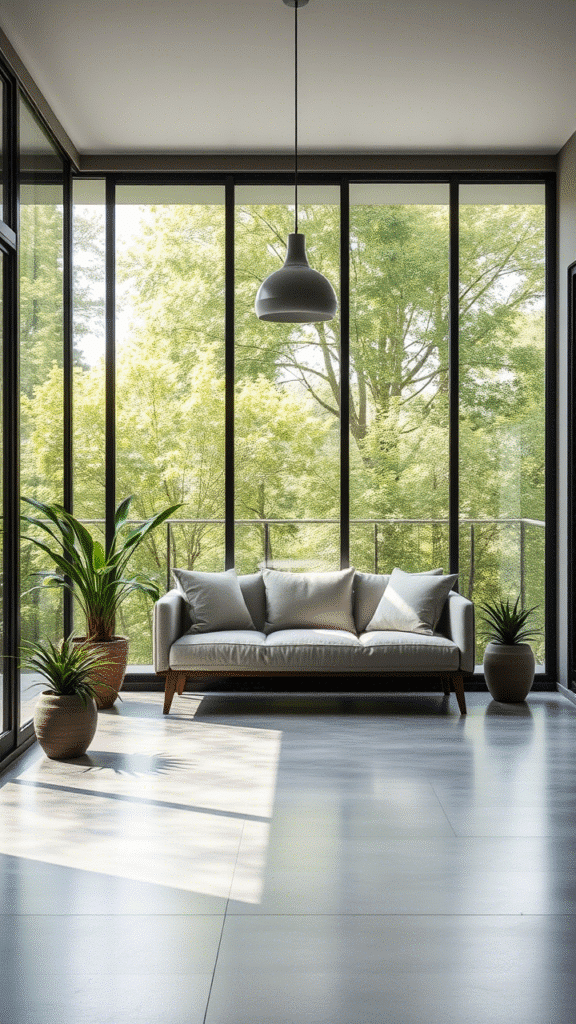
When designing a small entryway, balancing both style and functionality is crucial. The space serves several purposes: it needs to be practical for storing shoes, coats, bags, and other essentials while also providing a warm and inviting atmosphere for guests. Incorporating stylish furniture and clever storage solutions can make all the difference in transforming a small entryway into a welcoming, organized, and visually appealing space.
Maximizing Storage in Small Entryways
Built-In and Floating Storage Solutions
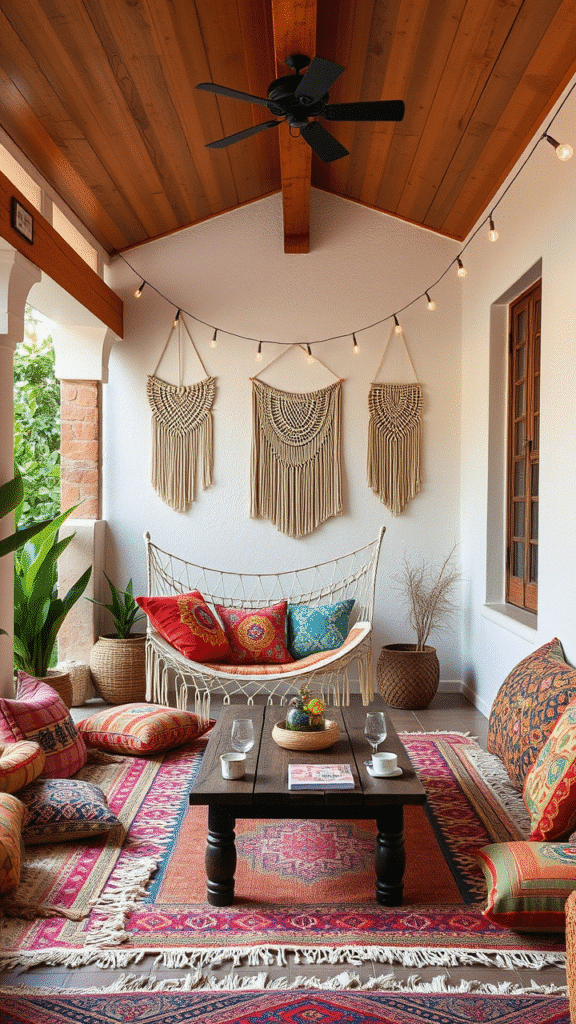
Storage is one of the most important factors in small entryway design. To make the most of the available space, consider built-in solutions like cabinets, shelves, or hooks. These items can help you keep the space organized and free from clutter.
Popular Storage Ideas:
- Built-in cabinets: Perfect for hiding away shoes, coats, and bags while maintaining a clean look.
- Floating shelves: Ideal for placing decorative items or everyday essentials like keys and mail. These shelves are mounted on the wall, freeing up floor space.
- Over-the-door hooks: A simple yet effective solution for hanging coats, hats, and scarves.
By utilizing vertical space and opting for built-in or floating storage, you can maximize storage without taking up valuable floor area.
Hidden Storage Ideas to Conceal Clutter
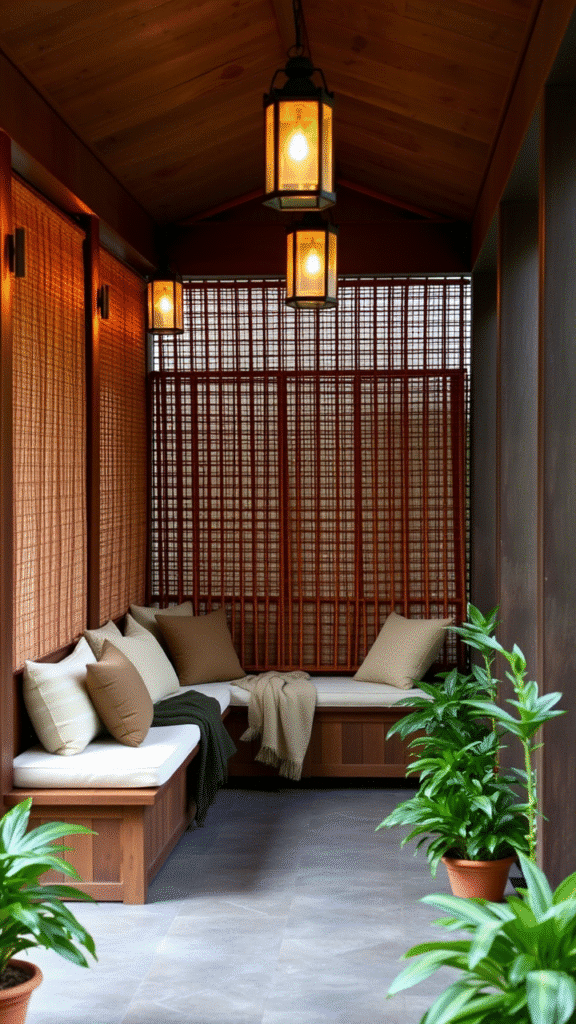
A hidden storage solution is an ideal way to keep your small entryway neat and tidy. Whether you’re storing shoes, umbrellas, or out-of-season clothing, hidden compartments allow you to maintain a clutter-free space while still having easy access to your items.
Hidden Storage Options:
- Storage benches: A bench with storage underneath offers dual functionality, providing a place to sit while putting on shoes and a hidden compartment to store them.
- Pull-out drawers: These drawers can be integrated into furniture pieces, such as benches or console tables, providing a hidden space for small items.
- Ottomans with storage: Compact ottomans or poufs that open up to reveal additional storage are both practical and stylish.
These storage ideas help you keep the entryway organized, allowing you to conceal everyday items that would otherwise clutter the space.
Creative Shoe Storage Solutions
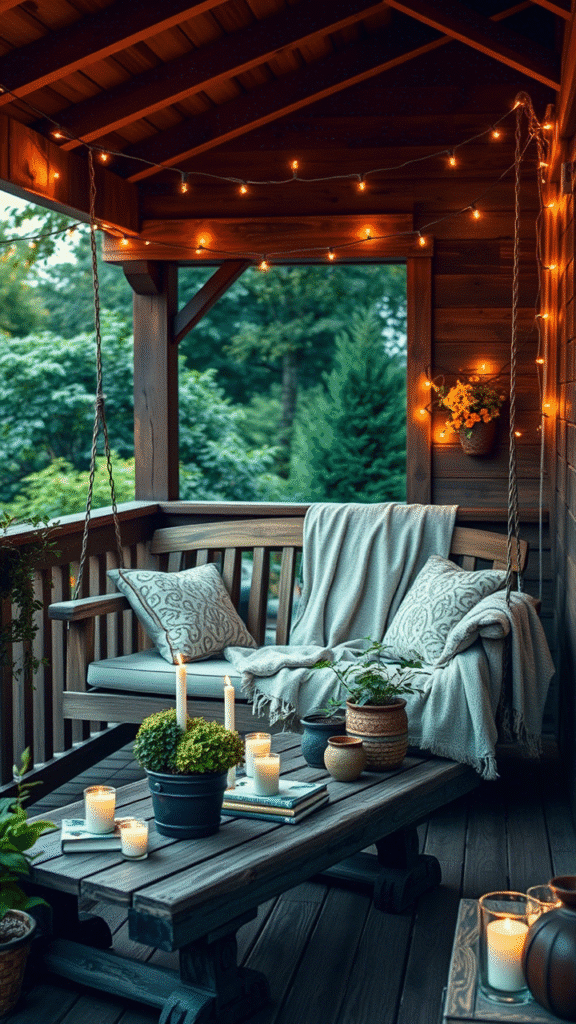
For many people, shoes are the most common source of clutter in entryways. A small entryway often lacks the space for a full-sized shoe rack or closet, so it’s important to get creative with shoe storage.
Top Shoe Storage Solutions:
- Stackable shoe racks: A simple, modular solution that allows you to stack shoes vertically without occupying too much space.
- Under-the-bench storage: A great option for storing shoes out of sight. Look for benches with hidden compartments or pull-out drawers.
- Wall-mounted organizers: These racks or hooks are mounted on the wall, allowing you to store shoes while keeping the floor space clear.
These storage options are both functional and space-saving, ensuring your shoes stay organized without compromising the look of your entryway.
Design and Decor Strategies for Small Entryways
Using Mirrors to Create the Illusion of Space
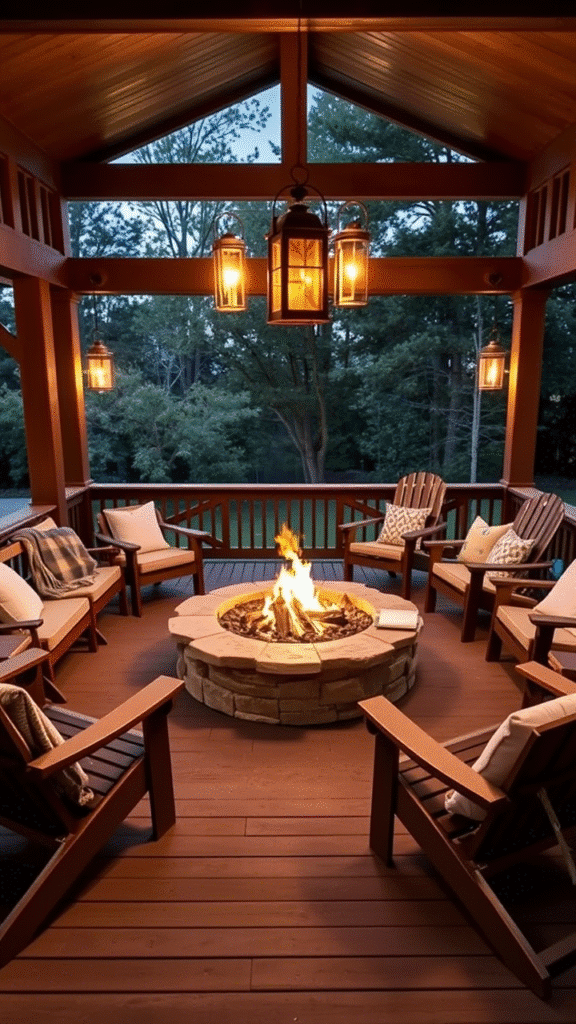
Mirrors are a fantastic design tool for small entryways. Not only do they add an element of style, but they also serve a practical purpose — reflecting light and making the space appear larger. In small spaces, mirrors can create a sense of depth and open up the area, making it feel less cramped.
Tips for Using Mirrors in Small Entryways:
- Large mirrors: Hang a full-length mirror on one wall to reflect both light and the rest of the entryway.
- Opposite the door: Placing a mirror opposite the entrance helps reflect the natural light coming in, brightening up the space.
- Framed or frameless: Choose a mirror frame that complements your overall decor style, whether it’s modern, rustic, or traditional.
Incorporating mirrors into your small entryway not only enhances its functionality but also elevates its overall design.
Read This Blog: https://hometranquil.com/white-and-red-christmas-lights-outside/
Incorporating Statement Furniture Pieces
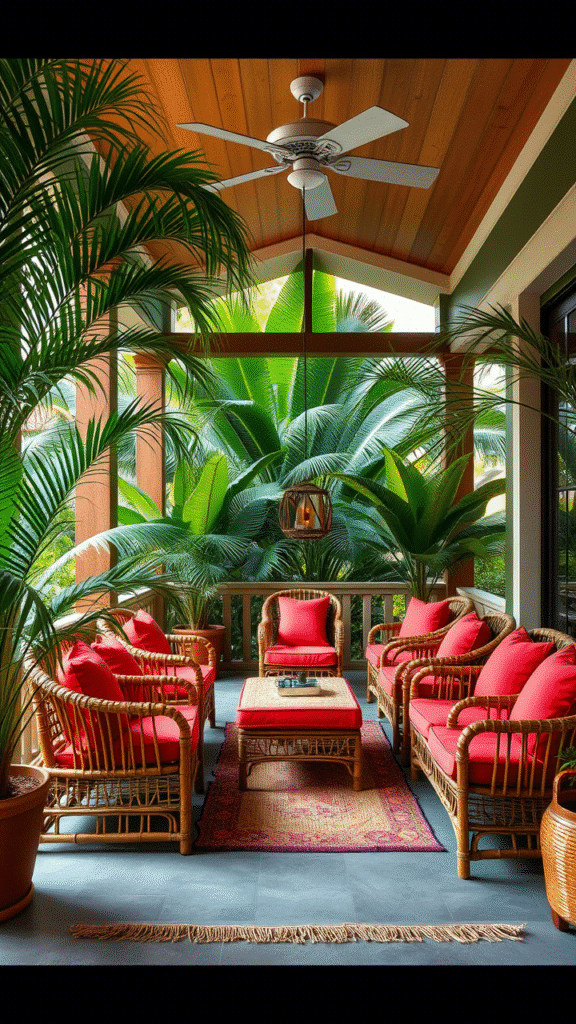
While minimalist furniture is often preferred in small spaces, adding a statement piece can bring personality and style to your entryway. Statement furniture doesn’t have to be large — it just needs to stand out through color, texture, or design.
Statement Furniture Ideas for Small Entryways:
- Decorative benches with hidden storage: A stylish bench not only provides seating but can double as a storage solution for shoes or bags.
- Console tables: A narrow console table with clean lines can serve as a place to drop keys and mail, while also acting as a decorative feature.
- Unique lighting: Pendant lights, chandeliers, or statement sconces can provide illumination while also adding an element of style to your entryway.
These pieces combine function and aesthetics, making your entryway both practical and visually appealing.
Vertical Space Utilization
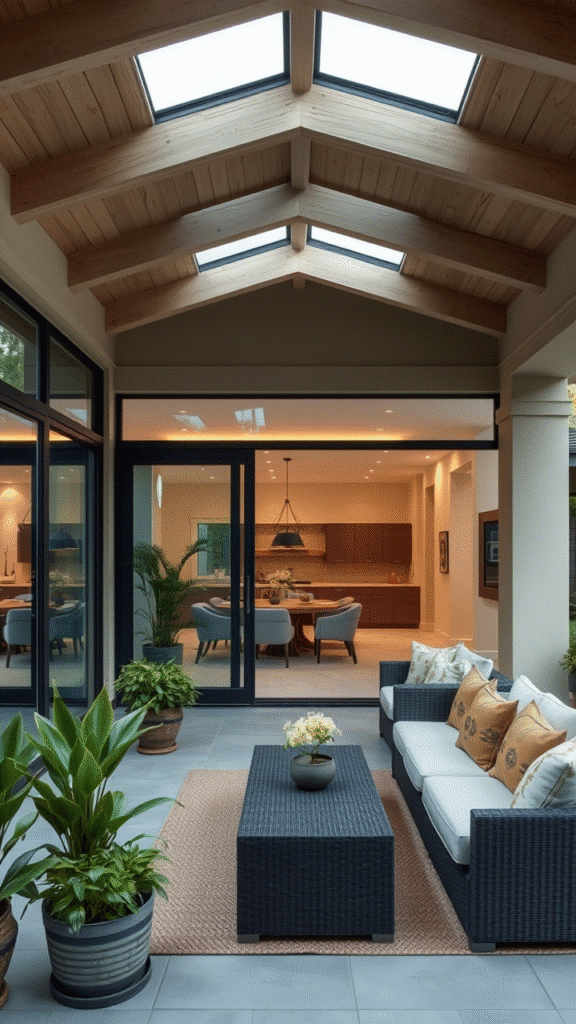
When working with a small entryway, it’s essential to think vertically. By utilizing the walls for storage and decor, you can keep the floor space clear and maximize the available square footage.
Vertical Storage Ideas:
- Wall hooks: Install hooks or pegs on the wall to hang coats, bags, or scarves.
- Floating shelves: Place floating shelves above eye level to store decorative items, books, or other everyday essentials.
- Tall storage units: Consider tall, slim storage solutions like vertical shelving units or cabinets to store items without taking up much floor space.
These vertical storage ideas help maintain an organized entryway without sacrificing style.
Color and Lighting Strategies for Small Entryways
Choosing the Right Color Scheme for Small Entryways
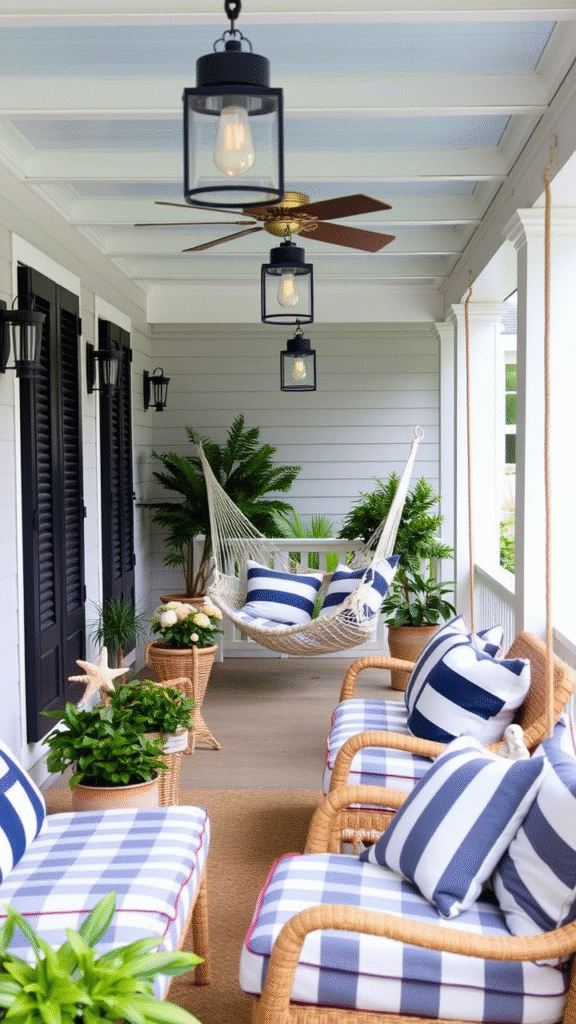
Colors play a significant role in how small spaces feel. Lighter shades like white, beige, or pastel tones can help reflect light and create the illusion of space. Bold or dark colors, on the other hand, may make the entryway feel more confined. When choosing a color scheme, it’s important to strike a balance between light, neutral tones and a few bold accents.
Color Tips for Small Entryways:
- Light and neutral colors: White, beige, and soft pastels make the space feel larger and airier.
- Warm wood tones: Adding warm, natural wood accents can make the entryway feel welcoming without overwhelming the space.
- Pop of color: Consider using a colorful rug, artwork, or accessories to create a focal point in the entryway.
Using light, reflective colors along with strategic pops of bold hues can help create a balanced and welcoming entryway.
Lighting to Brighten and Expand the Space
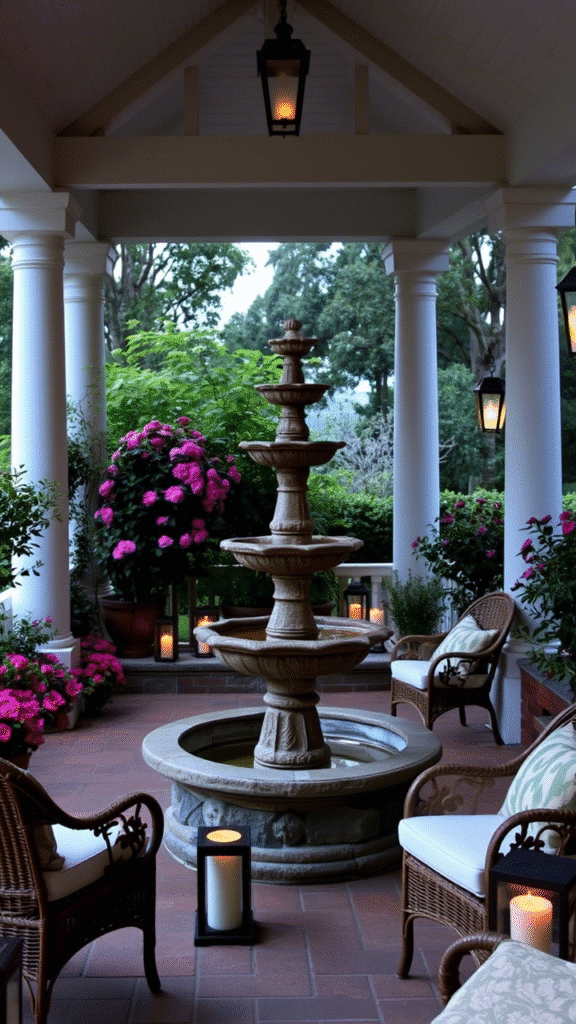
Lighting is essential in any space, but it’s especially important in small entryways. Proper lighting can brighten the space, make it feel larger, and enhance its overall ambiance. When choosing lighting for small entryways, focus on a mix of task, ambient, and accent lighting.
Lighting Options for Small Entryways:
- Wall sconces: Wall-mounted sconces are ideal for small spaces, as they free up floor space while providing ambient lighting.
- Pendant lights: A small pendant light can provide both style and function, illuminating the entryway and adding a decorative touch.
- Recessed lighting: If your entryway has a low ceiling, recessed lighting can offer subtle illumination without taking up any space.
By strategically placing different types of lighting, you can create a bright, welcoming atmosphere in your small entryway.
Small Entryway Flooring Ideas: Practical and Stylish Choices
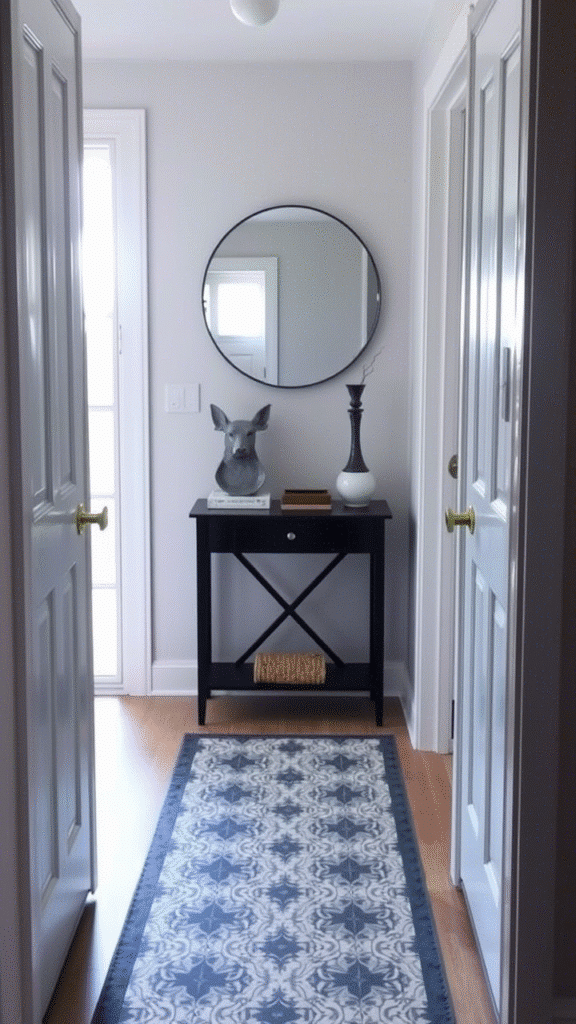
Best Flooring Options for Small Entryways
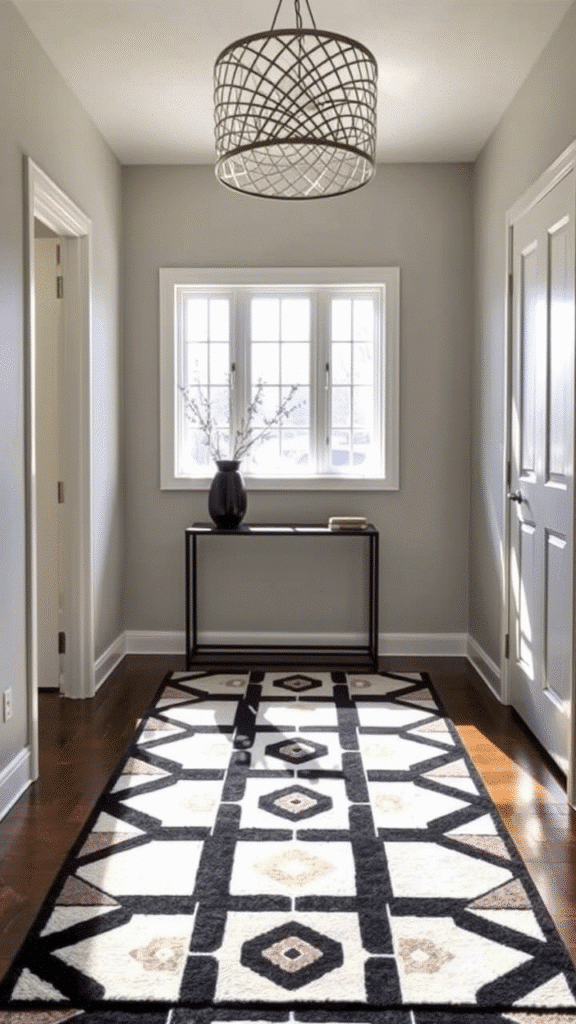
Choosing the right flooring for a small entryway is essential for both function and style. Flooring should be durable enough to handle heavy foot traffic while also complementing the overall decor of the space. Some of the best flooring options for small entryways include:
- Light-colored tiles or wood: These materials reflect light and help make the space feel larger.
- Textured rugs: Add warmth and texture with a durable rug that fits the space perfectly.
- Vinyl or laminate: These materials are easy to clean and maintain, making them ideal for entryways.
Patterns that Add Visual Interest
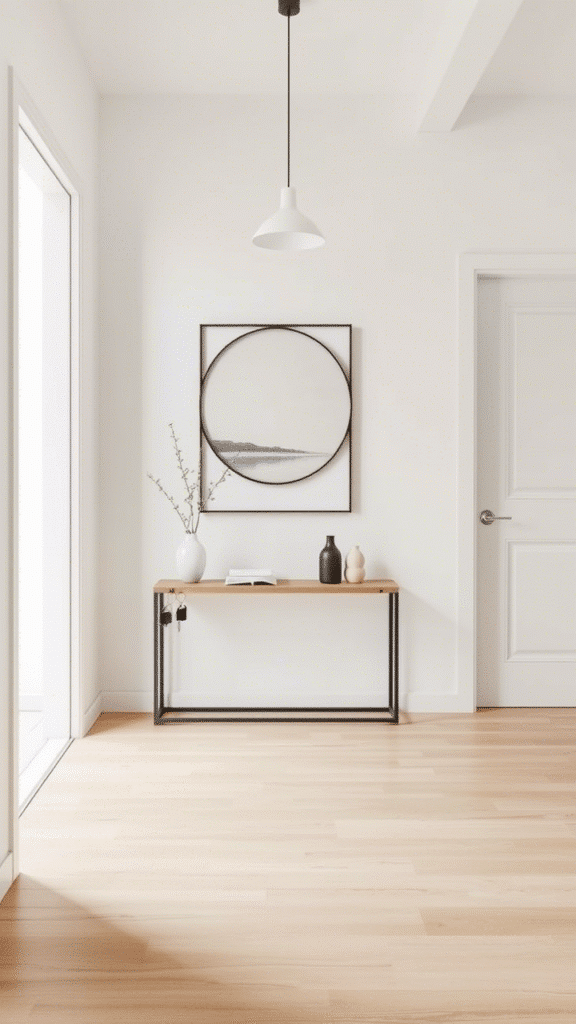
In addition to selecting the right material, consider using patterns to add depth and visual interest to the floor. Chevron or herringbone patterns are particularly effective in small entryways because they create the illusion of movement and space.
Pattern Ideas for Small Entryways:
- Chevron or herringbone wood or tile flooring: These patterns draw the eye and can make a small entryway feel more expansive.
- Area rugs: Choose rugs with bold patterns or colors to define the space and add visual appeal.
Using patterns strategically can make your small entryway feel more dynamic and visually engaging.
Minimalist and Multi-Functional Decor Ideas for Small Entryways
Embracing Minimalism to Maximize Space

One of the most effective design strategies for small entryways is minimalism. By keeping furniture and decor to a minimum, you can create a clean, clutter-free space that feels more open and airy. Choose streamlined furniture and decor pieces that serve a dual purpose to maximize the space without overcrowding it.
Minimalist Decor Tips:
- Neutral colors: Stick to a simple color palette with neutral tones like white, beige, and gray.
- Fewer, larger pieces: Opt for fewer furniture pieces but choose larger, multifunctional ones like a storage bench or console table.
- Declutter regularly: Keep the entryway tidy by removing unnecessary items and only keeping essentials.
Minimalist design is ideal for small entryways because it helps keep the space open and functional.
Incorporating Multi-Functional Furniture
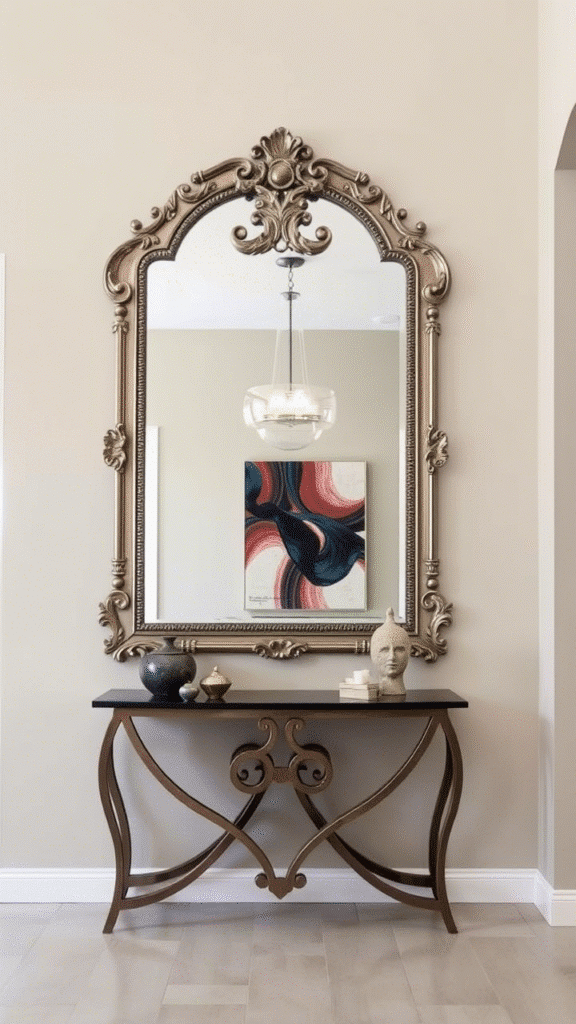
Multi-functional furniture is a game-changer for small spaces. Look for furniture that serves more than one purpose, such as a bench with storage or a console table with built-in shelving. These pieces provide both functionality and style, making them perfect for small entryways.
Multi-Functional Furniture Ideas:
- Benches with storage: Perfect for seating and storing shoes, bags, and other essentials.
- Wall-mounted shelves: Offer additional storage without occupying valuable floor space.
- Foldable furniture: Consider foldable benches or stools that can be tucked away when not in use.
By incorporating multi-functional furniture, you can keep your small entryway organized and stylish.
Personalizing Your Small Entryway
Adding a Focal Point with Statement Pieces
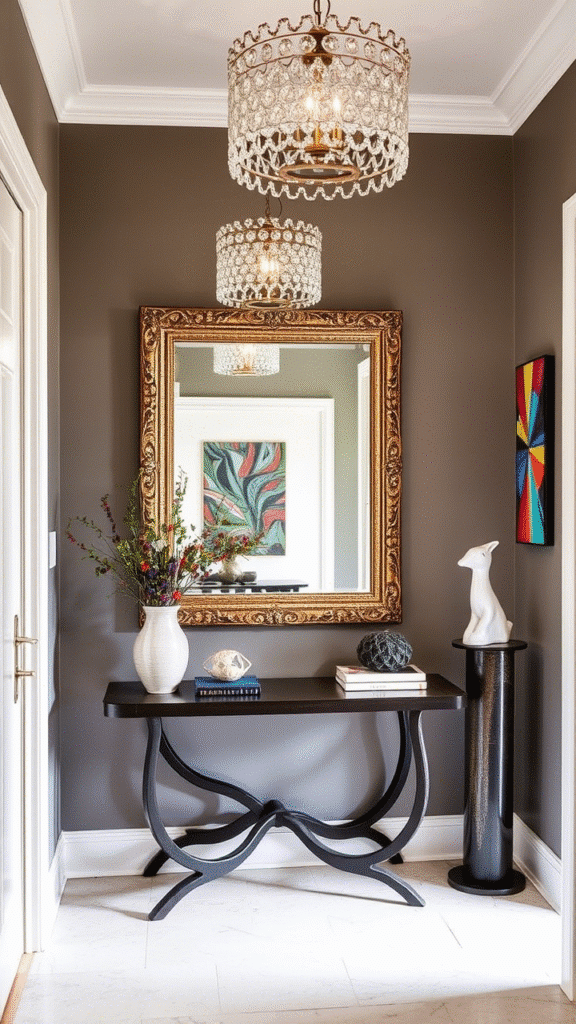
A statement piece can elevate the style of any space, including small entryways. A bold piece of artwork, a unique sculpture, or a large mirror can act as a focal point that draws the eye and adds personality to the room.
Statement Piece Ideas:
- Artwork or mirrors: Large, bold pieces can make a small entryway feel more expansive.
- Decorative vases or sculptures: Add a personal touch with accessories that reflect your style.
Conclusion
Designing a stylish and functional small entryway doesn’t have to be a challenge. By focusing on maximizing storage, using design tricks like mirrors and lighting, and choosing the right furniture and decor, you can create a space
